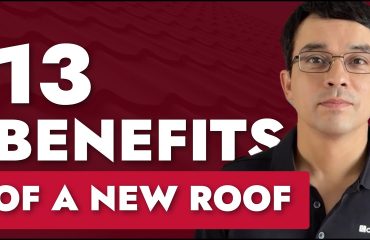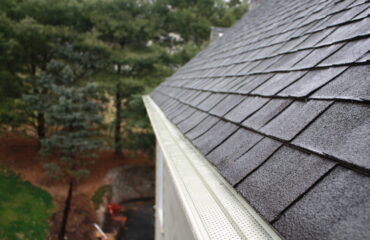Box vents and ridge vents may seem similar at a glance, but choosing the wrong type of attic ventilation can lead to poor airflow, higher energy bills, and even long-term damage to your roof structure.
At William Penn Roofing, we’ve spent the last 15 years helping homeowners protect their roofs with the right ventilation systems. In this article, we’ll break down the key differences between ridge vents and box vents, including cost, efficiency, appearance, and installation, so you can make an informed decision for your home.
Not sure which option is right for your roof? Get a free estimate from our licensed roofing contractors. We’ll inspect your attic, assess your roof’s layout, and help you choose the most effective ventilation solution for your home.
What Is a Ridge Vent?
A ridge vent is a type of exhaust ventilation installed at the peak of a sloped roof. Each piece is about 4 feet long and has fiberglass mesh on the back to keep out insects and rodents.
It also features side louvers that help hot air escape through the ridge, working as part of a passive airflow system where cooler air enters through soffit vents and warm air naturally rises out through the top.
What Is a Box Vent?
A box vent is another way to exhaust hot air from your attic, especially useful in tighter or smaller roof areas.
It’s installed by nailing it into the roof deck at four corners, with an ice shield applied around it for protection. Air enters through intake points in the attic and exits through louvers on the sides of the box vent.
Ridge Vents vs. Box Vents: Comparing Your Options
| Feature | Ridge Vent | Box Vent |
| Cost | More expensive to install; higher labor and material cost | Lower installation cost; more budget-friendly |
| Ventilation Efficiency | Allows more air to escape; better for passive airflow | Less efficient; smaller vent opening limits airflow |
| Aesthetics / Curb Appeal | Streamlined, low-profile look; blends into the roofline | More visible on the roof; can appear as multiple black, brown, or white patches |
| Installation Method | Installed along the ridge by cutting a 1-inch gap; requires soffit intake | Installed lower on the roof by cutting 6-inch round holes into the plywood |
| Impact on Roof Lifespan | Promotes cooler attic temperatures, preventing plywood delamination and premature wear | Hotter attic conditions may lead to faster roof aging and plywood delamination over time |
Cost Considerations
- Ridge Vent: Slightly more expensive, but offers better efficiency and durability.
- Box Vent: Lower cost in materials and labor.
Ventilation Efficiency
- Ridge Vent: Allows more air to pass through the roof and generally looks better on the home.
- Box Vent: Less efficient. The airflow is limited to the size of the 6-inch round hole cut into the roof.
Aesthetic Considerations
- Ridge Vent: Looks more streamlined and less visible; blends into the roof nicely.
- Box Vent: Doesn’t blend in as well; may appear as several visible patches in black, brown, or white.
Installation Requirements
Ridge Vent:
- Installed at the ridge (where two roof facets meet at the peak).
- We cut a 1-inch gap along the ridge to install it.
- Requires proper soffit air intake—50% intake and 50% exhaust.
Box Vent:
- Installed 18 inches to 2 feet down from the ridge.
- Requires cutting a 6-inch round hole in the roof deck, with the vent placed over it.
- Air must find its way out through the small hole.
Impact on Roof Lifespan
- Ridge Vent: When you install a ridge vent, it allows more passive airflow to leave the attic, preventing plywood delamination and premature wear.
- Box Vent: With box vents, more hot air tends to stay inside. This heat, combined with UVA and UVB rays, can cause delamination of plywood over time.
Which Vent is the Right Choice for Your Roof?
Choose a Ridge Vent If:
- Your attic or second floor gets uncomfortably hot.
- Your roof has enough ridge space for installation.
- You have existing soffit vents for intake airflow.
- You’re installing a new roof and want a more efficient, long-lasting system.
Choose a Box Vent If:
- You lack soffit vents or intake airflow.
- Your roof has tight or small sections.
- You’re looking to save on cost.
- Your home previously used box vents.
Pro Tip: If your roof currently has ridge vents, stick with them when re-roofing. Consistency improves performance and appearance.
Ready to Upgrade Your Roof Ventilation? Get a Free Estimate Today
If you’re unsure about whether a ridge vent or box vent is right for your home, William Penn Roofing is here to help. We’ll assess your roof structure, airflow needs, and budget to recommend the best solution.
Get your free quote today and protect your home with proper roof ventilation.



Comments are closed.